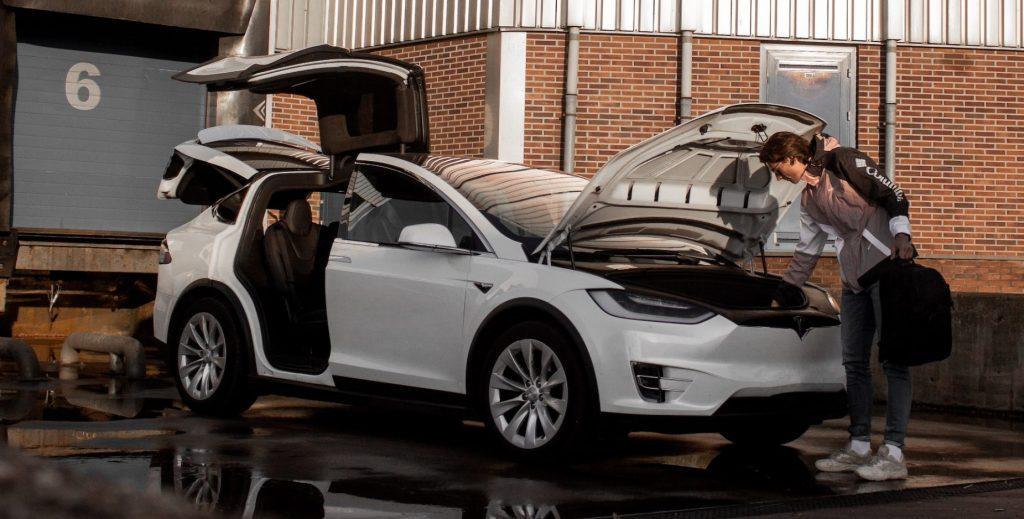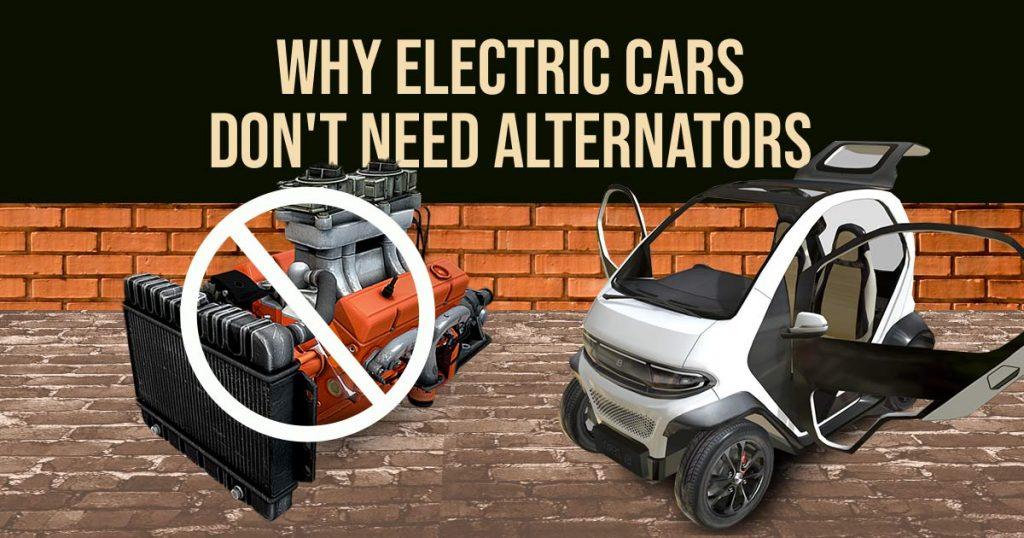Electric vehicles have taken a prominent position in the automotive sector, transforming our perception of mobility. With their eco-friendly nature and impressive technological advancements, they are changing the landscape of the road. However, for those not well-versed in electric vehicles (EVs), questions like, “Do electric cars have alternators?” and “Why don’t electric cars have alternators?” might arise. In this article, we will explore the role of alternators in traditional vehicles, why electric cars do not need them, and whether it’s possible to install an alternator in an electric car.
What is an Alternator and How Important Is It in Cars?
In order to comprehend why electric vehicles don’t need alternators, it’s crucial to grasp the function and importance of an alternator in conventional internal combustion engine (ICE) cars.
An alternator is a vital component found in ICE vehicles. It functions as a compact generator that generates Alternating Current (AC). Its main role is to recharge the car’s battery and supply electricity to its electrical components during engine operation. This process is achieved by utilizing a belt linked to the car’s engine, which rotates a pulley attached to the alternator’s rotor. Within the rotor, there are either magnets or coils of copper wire with a small Direct Current (DC) flowing through them.
This flow of DC current generates a magnetic field, and as the rotor rotates thanks to the pulley, the magnetic field induces a current flow in a set of stationary coils. The alternating polarity of the magnetic field on the rotor causes the induced current to “flip-flop” hundreds of times per second, creating AC. Diodes within the alternator then convert this AC into DC, and a voltage control circuit regulates the output voltage to charge the vehicle’s 12-volt battery and power its electrical accessories.
In essence, an alternator converts mechanical energy from the engine’s operation into electrical energy, which is essential for an ICE vehicle to function correctly. However, this process is not 100% efficient, and some energy is lost as heat, vibration, and noise during conversion.
Why Don’t Electric Cars Have Alternators?
Electric cars, in stark contrast to traditional Internal Combustion Engine (ICE) vehicles, are devoid of the quintessential internal combustion engine. This core distinction serves as the cornerstone for understanding precisely why electric cars do not incorporate alternators into their design.
No Combustion Engine
One of the key explanations for the lack of alternators in electric vehicles is the nonexistence of an internal combustion engine (ICE). In traditional automobiles, alternators depend on the mechanical energy produced by the engine via the burning of fossil fuels. This combustion process ignites chemical energy, transforming it into thermal energy, which, in turn, powers pistons, creating linear mechanical energy, which eventually leads to rotational mechanical energy that drives the alternator. This intricate sequence, unique to ICE vehicles, forms the crux of the alternator’s operation. In contrast, electric cars eschew this complex process as they lack an internal combustion engine entirely. Thus, the very essence of an alternator’s role becomes superfluous in electric cars’ propulsion mechanism.
Inefficiency
Even if one were to contemplate the installation of an alternator in an electric car, the endeavor would prove not only futile but inherently inefficient. Operating an alternator within an electric vehicle context would necessitate drawing additional electric power from the car’s battery. This paradoxical scenario essentially translates to utilizing electricity to generate more electricity, introducing significant energy losses and a notable decline in overall efficiency. Such an approach starkly contradicts the foundational principles upon which electric vehicles are built – optimizing energy utilization and efficiency.
Electric cars predominantly rely on high-voltage traction batteries as their power source to energize their electric motors. These batteries boast substantial energy storage capacity, effectively serving as the heart of the electric vehicle. When required, this stored electric power is transformed into mechanical energy, driving the vehicle in a forward direction. In essence, electric cars circumvent the need for alternators by harnessing their power from dedicated charging infrastructure or, in some instances, utilizing solar panels to recharge their batteries using sustainable and renewable energy sources.
Does This Make Electric Cars Easier to Maintain?

The absence of alternators in electric cars brings forth a significant advantage in terms of maintenance, setting them apart from their ICE counterparts.
Mechanical Simplicity
Alternators, inherent to traditional ICE vehicles, are intricate mechanical components teeming with moving parts. These components, over time, are susceptible to wear and tear due to the incessant mechanical stresses they endure. Components such as belts, pulleys, and bearings associated with alternators are prone to periodic degradation, necessitating replacements and contributing to the overall maintenance costs of the vehicle.
Electric Motor Efficiency
Electric cars predominantly rely on electric motors for propulsion, a stark departure from the mechanical complexities of alternators in ICE vehicles. Electric motors, by design, feature fewer moving parts, resulting in a simpler and more streamlined mechanical architecture. This inherent mechanical simplicity inherently reduces the need for frequent maintenance, thereby potentially reducing the service and repair expenses borne by electric car owners.
Can You Install an Alternator in an Electric Car?
While it is technically feasible to install an alternator in an electric car, doing so would be counterproductive and inefficient. As previously mentioned, electric cars are designed to operate without the need for alternators. Attempting to use an alternator in an electric car would involve using the car’s battery to spin a motor, which, in turn, would spin the alternator to generate electricity. This process would result in a net loss of energy since energy is lost during the conversion process. In essence, it would be using electricity to create electricity with an overall decrease in efficiency.
Moreover, electric car batteries typically operate at higher voltages (often over 300VDC) than the 12V systems found in traditional ICE vehicles. Electric cars use DC-to-DC converters to adapt this high voltage to the 12V level required for accessories like headlights and radios. Installing an alternator in an electric car would not align with the vehicle’s electrical system design and would be a complex and unnecessary addition.
Final Thoughts
Electric cars have transformed the automotive industry by offering a sustainable and efficient mode of transportation. Their unique design and reliance on high-capacity batteries for power render the need for alternators obsolete. While alternators play a crucial role in traditional ICE vehicles, they do not have a place in the world of electric cars.
Electric cars are engineered to maximize energy efficiency and minimize waste, which is at odds with the concept of using alternators to generate electricity. Therefore, electric cars do not have alternators, and this absence contributes to their reduced maintenance requirements and overall efficiency.
